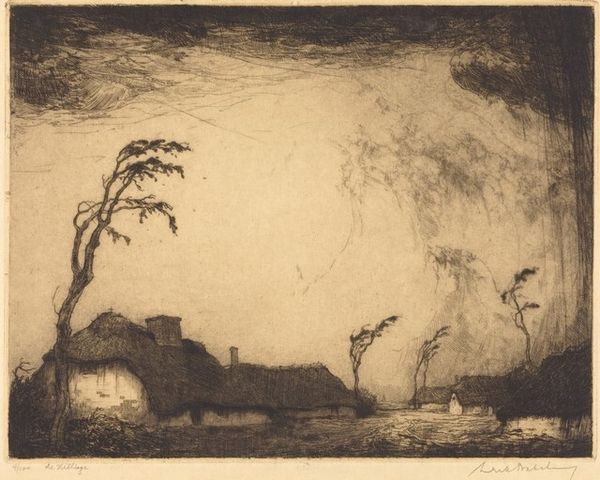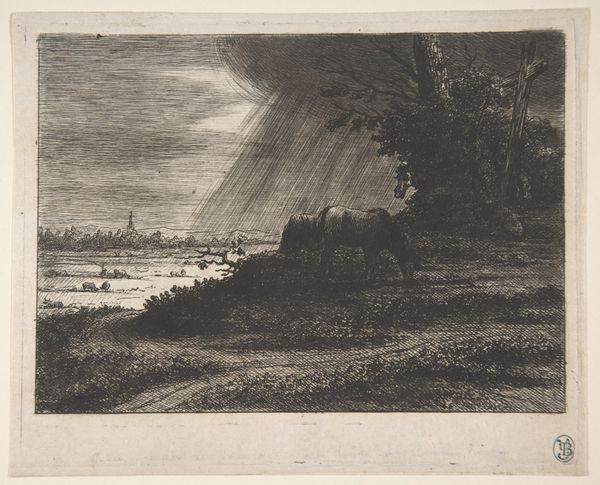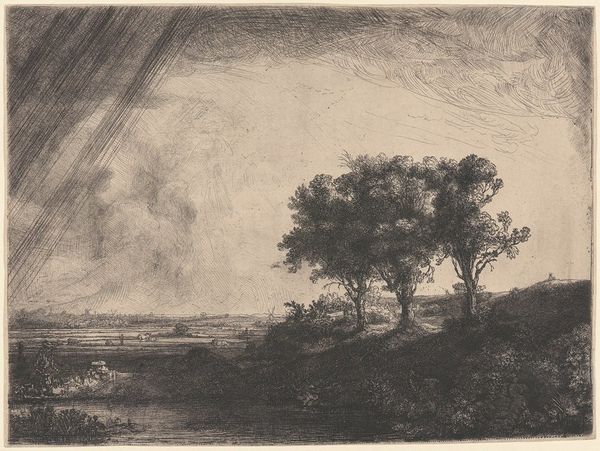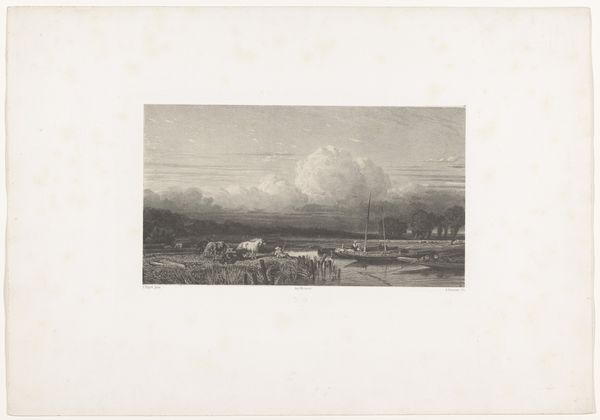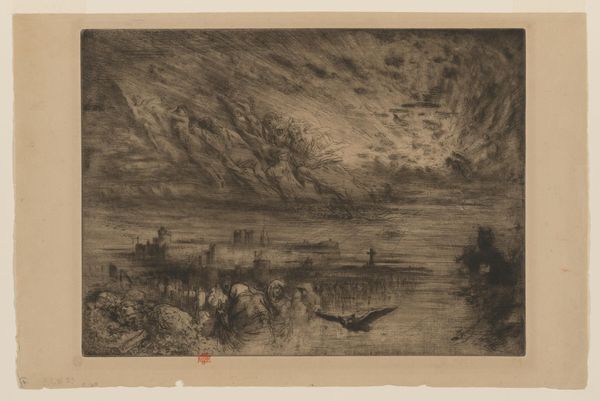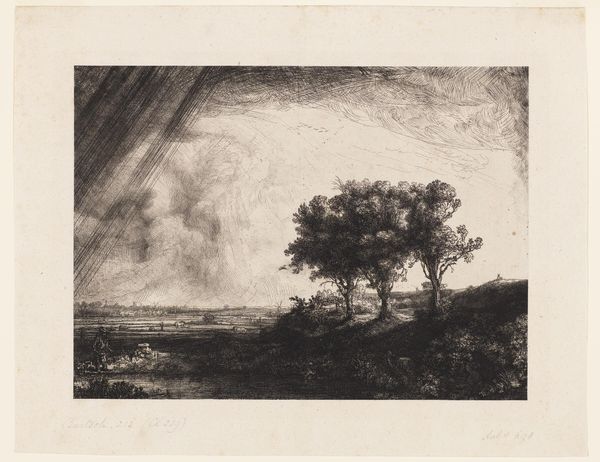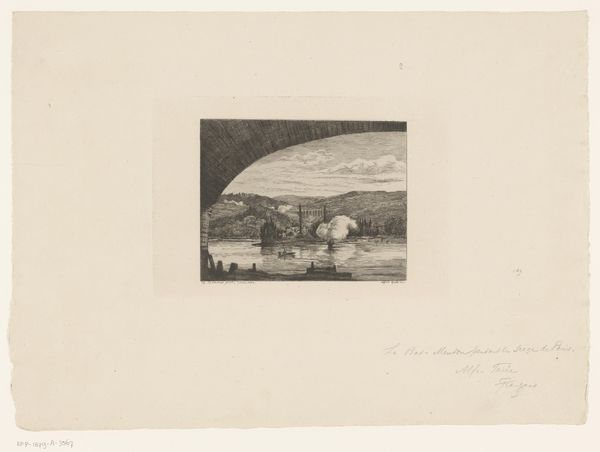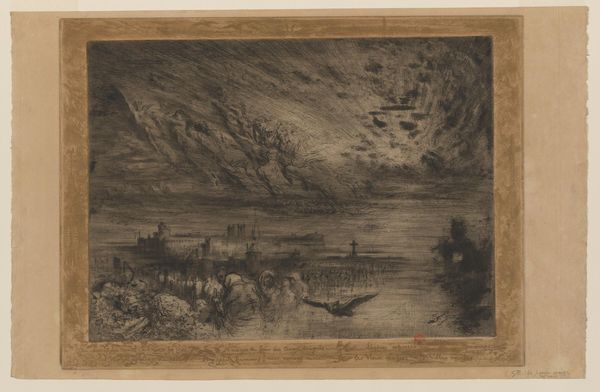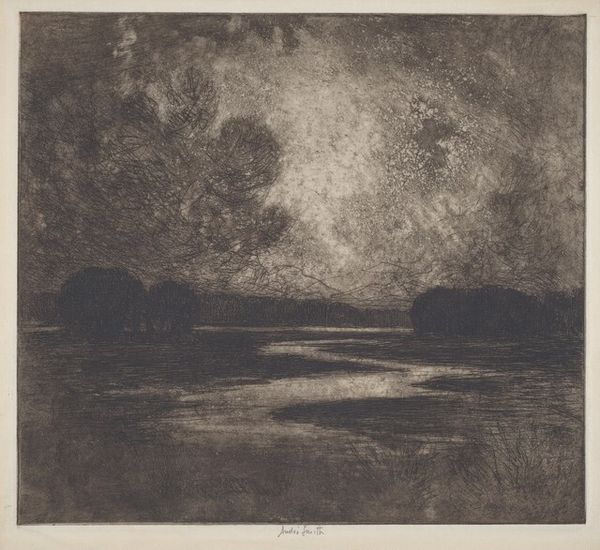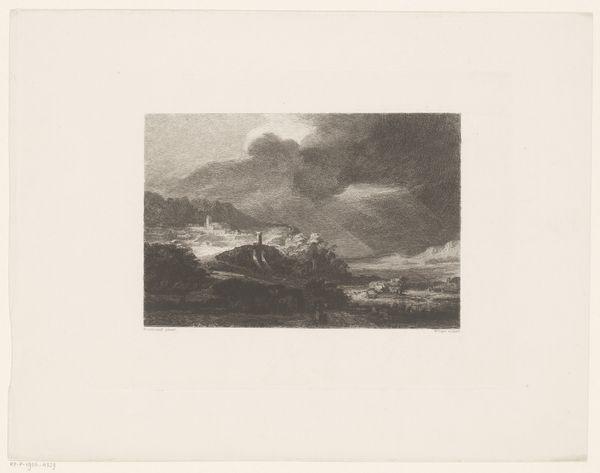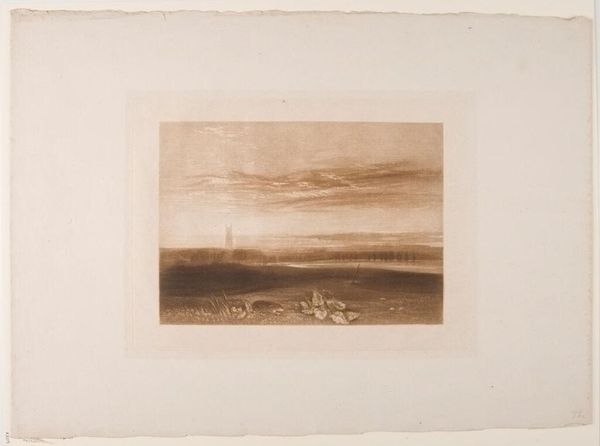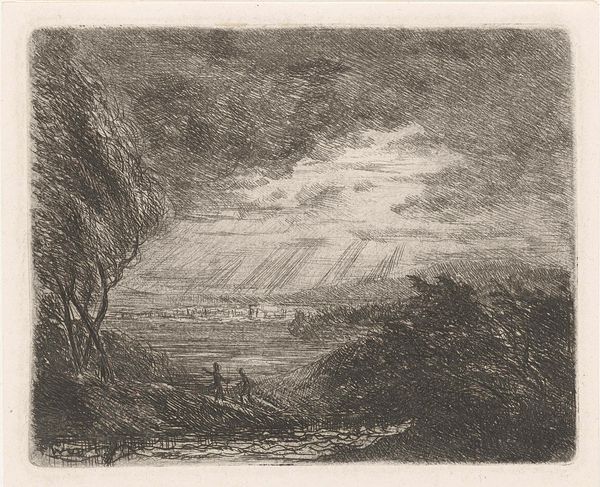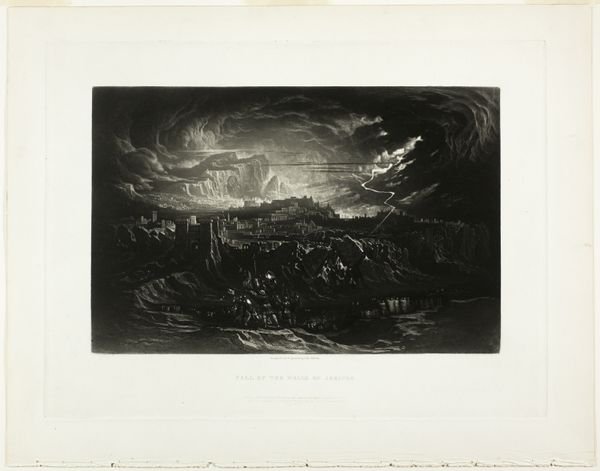
Copyright: National Gallery of Art: CC0 1.0
David Young Cameron's "Two Bridges" presents us with more than just a landscape; it evokes a profound sense of place, a stage upon which our collective memories play out. The bridge, a prominent motif, speaks to a primal human desire to connect, to traverse divides, both literal and metaphorical. It is not merely a structure of stone and mortar; it's a symbolic link between the known and the unknown, the self and the other. Recall the Ponte Vecchio in Florence, once lined with merchants, or even older, Roman aqueducts which carried not just water, but also the very lifeblood of civilization. Each exemplifies how bridges carry profound cultural weight, representing connectivity and transition. The ethereal light in Cameron's etching—reminiscent of twilight—invokes a psychological space where the boundary between reality and dream blurs. This invites a consideration of how images engage viewers on a deep, subconscious level, revealing how motifs recur, transform, and acquire fresh relevance across the ages.
Comments
No comments
Be the first to comment and join the conversation on the ultimate creative platform.
